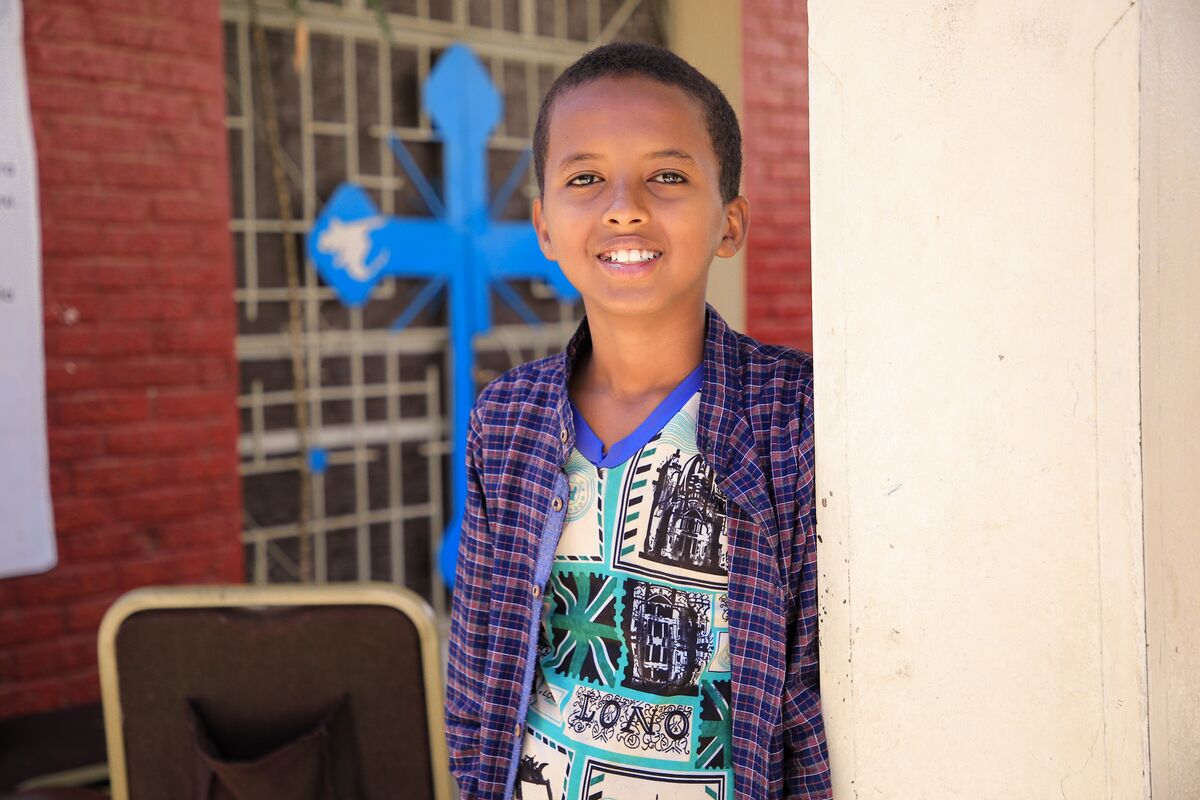Official Country Name: Federal Democratic Republic of Ethiopia
Capital City: Addis Ababa
Population: More than 123.3 million
Official Languages: Amharic, Oromo, Somali, Tigrigna, Afar
Population with access to safe drinking water: 13%
Life expectancy: Male 62 years, female 68 years
Infant mortality rate: 34 deaths / 1,000 live births
Percentage of children under the age of 5 underweight: 21.1%
Adult literacy rate: Male 59%, female 44%
Religion: Approximately 44% of the population follow the Ethiopian Orthodox Tewahedo Church, 31% Muslim, 23% are Protestant, and 2% are of another/unspecified religion or none.
Percentage living on less than $2.15 a day: 27%
Source: CIA World Factbook, International Religious Freedom Report, released in 2022 by the Office of International Religious Freedom, U.S. Department of State
Ethiopia is the oldest independent country in Africa and one of the oldest in the world. Missionaries from Egypt and Syria introduced Christianity in the 4th century. Following the rise of Islam in the 7th century, Ethiopia was gradually cut off from European Christendom.
In the 15th century, a Coptic Christian empire was established along with an autocratic monarchy. In the 1880s, Ethiopia was divided into several small kingdoms, reunified by Menelik II, who was Emperor from 1889 until his death in 1913. The monarchy was officially abolished in the 1970s.
Under the leadership of President Meles Zenawim, the government, run primarily by members of the Ethiopian People's Revolutionary Democratic Front, gained full independence. Mr. Zenawi remained in that position until his death in August 2012. Former Deputy Prime Minister Hailemariam Desalegn became prime minister, marking the first peaceful transition of power in decades.
In November 2020, there has been conflict within the country of Ethiopia localised in the northern regions.
Art
Much traditional Ethiopian art is religious and takes its inspiration from the Greek Orthodox Church. Many such paintings have a medieval, almost cartoonish style containing simplistic figures with large, almond-shaped, eyes.
Music
Ethiopia has a strong tradition of music. Modern pop music and traditional styles are popular with most audiences. Ethiopian music uses a model system with a pentatonic scale – a musical scale with five notes per octave. There are also characteristically long intervals between some notes. This has the effect of making the music appear unfinished. Folk instruments commonly used include the masenqo (fiddle), washint (flute), kebero (drums) and krar (lyre).
Language
The main language spoken in Ethiopia is Amharic. In the state or Oromia, Oromifa is spoken. Amharic: Tenaystilign? (How are you?) The word tena means health. If translated literally, it would mean, “may you have health”. Implicitly, it would mean, “may God give you health.” To respond, one would say, Egziabeher yimesgen, Dehena negne. This means, “God be praised, I am fine.” Oromifa: Naguma, Fayuma or Naga (How are you?)
Sports and Games
Many Ethiopians enjoy football, volleyball, and basketball.
Typical Foods
For Ethiopians, the coffee ceremony is a social event that brings people together. It is an important cultural ritual that’s been passed from generation to generation. According to legend, a goat herder named Kaldi discovered the coffee bean in the Kaffa region of Ethiopia around A. D. 800. Ethiopia’s staple food is injera, a spongy bread made of a unique crop only grown in Ethiopia called teff. Injera is baked in a clay pan and eaten with a sauce made of either meat, ground grains, beans, or vegetables.
The typical school year runs from September to June and public education is free until college.
The Ethiopian Orthodox Church has traditionally been the centre of education since the 4th century when Christianity was introduced into the country. In fact, literacy was initially limited to those in churches until Menelik II introduced modern education to the country about a century ago.
For a long time, the educational system catered to the needs of the civil service and bureaucracy with little or no attention to the development of vocational skills. The general attitude was that school was only for those who wanted to secure an office job.
While education is regarded as a means to escape from poverty, there are many challenges facing the education system in Ethiopia including: a lack of schools, low attendance, high dropout rates, and discrimination against girls. There is also a gap between the curriculum that is taught and the jobs that are available. Many believe the schools don’t adequately prepare young people for the realities of work.
Source: UNICEF
Approximately 44% of the population follow the Ethiopian Orthodox Tewahedo Church, 31% Muslim, 23% are Protestant, and 2% are of another/unspecified religion or none.
Religion is an accepted part of everyday life in Ethiopia. Even the language is full of references to God.
In the constitution, religion and the state are seen as very separate. As such, religious services can’t be held inside public institutions. The government officially recognises both Christian and Muslim holy days and continues to mandate a two-hour lunch break on Fridays to allow Muslims to go to a mosque to pray. Freedom of choice is recognised, and religious discrimination is illegal.
Christianity came to Ethiopia in ancient times and became the official Ethiopian religion in the fourth century. The Orthodox Church has many connections with ancient Judaism. In the northern region of Tigray and Amhara, the Ethiopian Orthodox church dominates. Priests and deacons are often seen in colourful robes, carrying their ornate crosses that passers-by may kiss.
Islam is also very strong in many parts of Ethiopia, particularly Afar, Oromia and Somali regions. The city of Harar, in the east of the country, is officially the fourth most holy Muslim site in the world. In the lowland areas, animistic and pagan religions are still commonly found among tribal peoples who live in simple communities.
Religious instruction in public and private schools is not allowed, although schools may organise clubs based on shared religious values.
Statistics from the International Religious Freedom Report, released in 2022 by the Office of International Religious Freedom, U.S. Department of State
